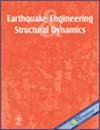Single Building Seismic Risk Assessment Including the Vertical Component: Quantitative Comparison, Intensity Measures, and Nonstructural Fragility Uncertainties
Abstract
The objective of this study is to investigate whether the additional damage to building components caused by vertical ground shaking and its impact on estimated monetary losses warrants the extra computational effort needed to include this feature for standard risk assessment applications. As a case study, we consider a 2D model of a modern nine-story steel frame building located at a high seismic hazard site in California. The structural and nonstructural demands are assessed via nonlinear dynamic analysis carried out using hazard-consistent bi-directional (horizontal & vertical) ground motion records. We estimated the seismic losses with and without the vertical ground motion using a component-based loss estimation approach based on FEMA-P58. We also explored the sensitivity of the loss estimates to the characteristics of the input vertical acceleration fragility curves. Analysis results indicate a modest increase in the average annual losses (AAL) when the vertical component is included, consistent with the relatively small fraction of the total building replacement cost assigned to components sensitive to vertical motion. We also investigate the sensitivity of the loss estimates to the conditioning ground motion intensity measure adopted in the risk assessment procedure. Considerable discrepancies are observed in the loss estimates on an intensity basis and, to a lesser degree, on a risk basis. Among the tested intensity measures, average spectral acceleration performs better than single-period spectral accelerations in two regards: it provides higher efficiency, and it maintains good consistency of the selected records with the site hazard while using lower levels of ground motion amplitude scaling. Whereas single-period spectral ordinates that will approximate these advantages may exist, finding them requires some investigation.

 求助内容:
求助内容: 应助结果提醒方式:
应助结果提醒方式:


